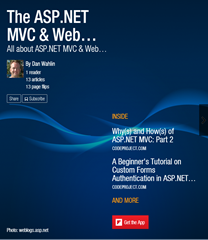
I’m excited to announce the release of another course on Pluralsight titled Creating Object-oriented TypeScript Code! If you’ve been wanting to learn more about ES2015 features as well as object-oriented features available in TypeScript then this this is the class for you!
Here are a few questions this course will help you answer:
- What techniques can be used to create objects in JavaScript and TypeScript?
- What is object-oriented programming?
- Can I work with classes?
- What are constructors?
- What are get/set properties?
- How do I define functions in classes?
- Is a static member the same as an instance member?
- Can classes be “extended”?
- What are abstract classes?
- What are the role of interfaces and how can I use them?
- When should I consider using classes, abstract classes, interfaces, polymorphism, inheritance, and more?
- Can you show me an example of these concepts being put to use in an application?
- And much more…
Here’s a summary of the course…
Creating Object-oriented TypeScript Code
TypeScript supports many different ways to define and create objects which can be confusing especially when you’re new to the language. Should you use a constructor function. Object.create(), classes, a coding pattern, or some other technique when creating objects?
The Creating Object-oriented TypeScript Code course will show different ways to create objects while focusing on object-oriented programming (OOP) techniques that can be used to maximize reuse and enhance productivity. Throughout the course you’ll learn about the core principles of object-oriented programming such as encapsulation, polymorphism, inheritance, and abstraction and see how they can be applied and used. You’ll learn how to define and instantiate classes in TypeScript, understand what members can be added to a class and the role they play, learn how inheritance can be used to promote reuse, and learn about what an abstract class is and why you’d use one.
You’ll also learn about the role of interfaces and how they can be used to create code contracts that drive consistency across a set of objects and enable polymorphic behavior. When you’re finished with this course you’ll have the skills and knowledge needed to build robust object-oriented applications using the TypeScript language and understand when and why to apply object-oriented programming principles.
Course Modules
- Course Overview
- Introduction to Object-oriented Programming in TypeScript
- Overview
- Introduction
- The Role of Objects
- Object Creation Techniques
- Object-oriented Concepts
- Summary
- Classes and Objects
- Introduction
- The Role of Classes
- Creating a Class
- Adding Class Members
- Creating a Class Instance
- Constructors and Properties
- Static Members
- Summary
- Inheritance and Abstraction
- Introduction
- The Role of Inheritance
- Inheriting from a Class
- The Role of Abstract Classes
- Creating and Inheriting from an Abstract Class
- Overriding Members
- Summary
- Interfaces and Polymorphism
- Introduction
- The Role of Interfaces
- Creating an Interface
- Using Interfaces
- Interfaces, Classes, and Polymorphism
- Summary
- Putting It All Together
- Putting It All Together
- Reviewing the Code
I hope you enjoy the course and gain new insights into the role object-oriented concepts and TypeScript features can play in your application code.






